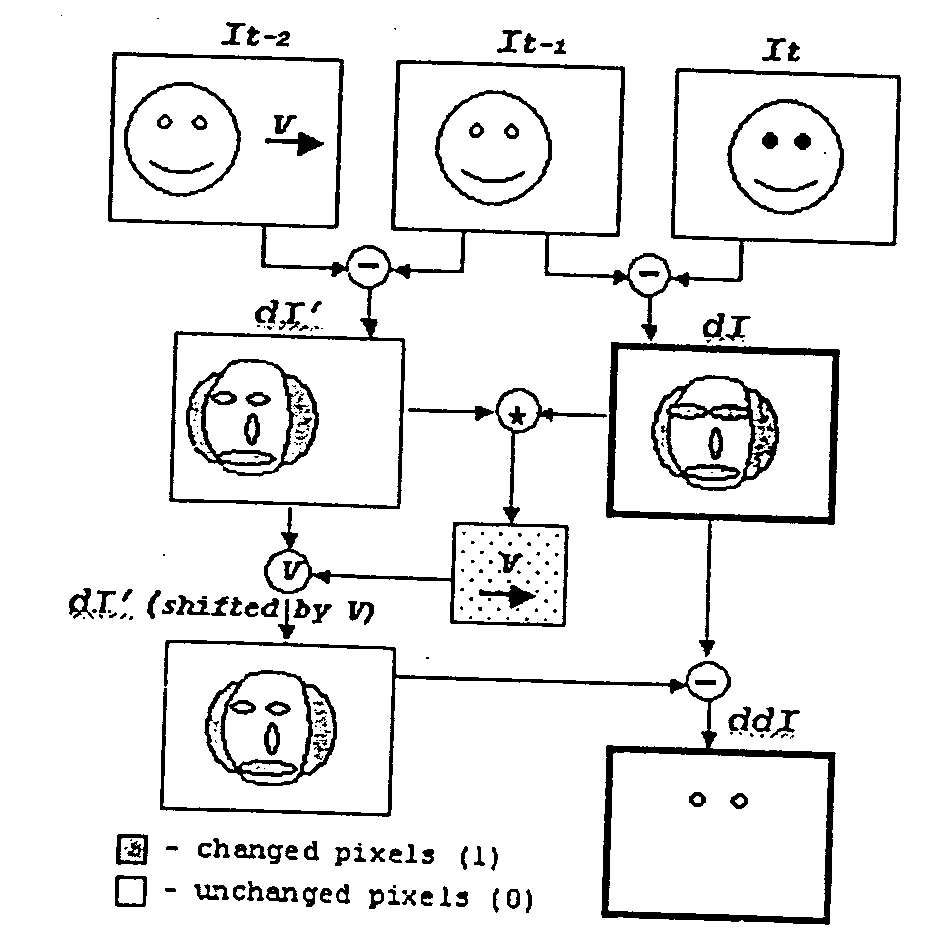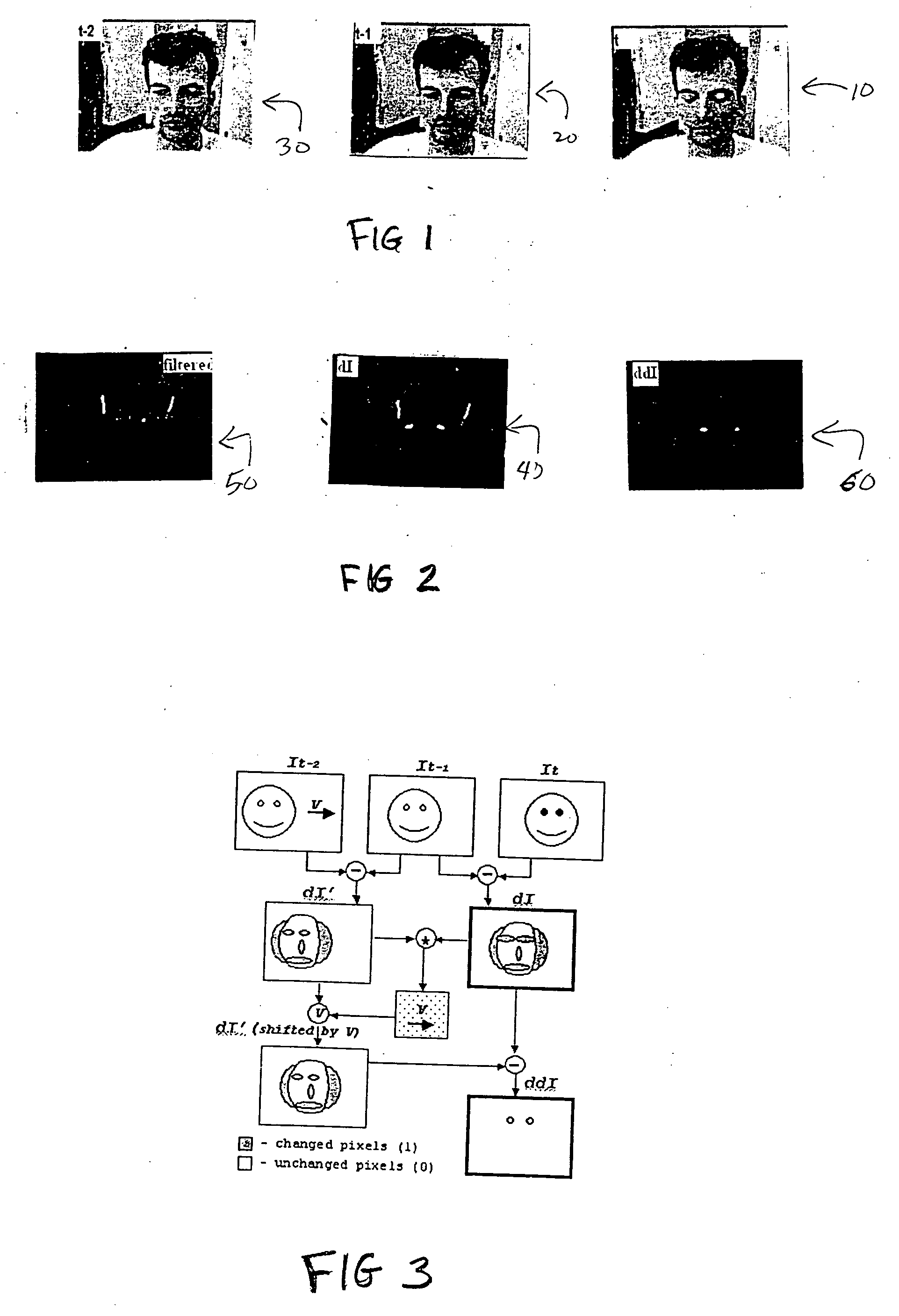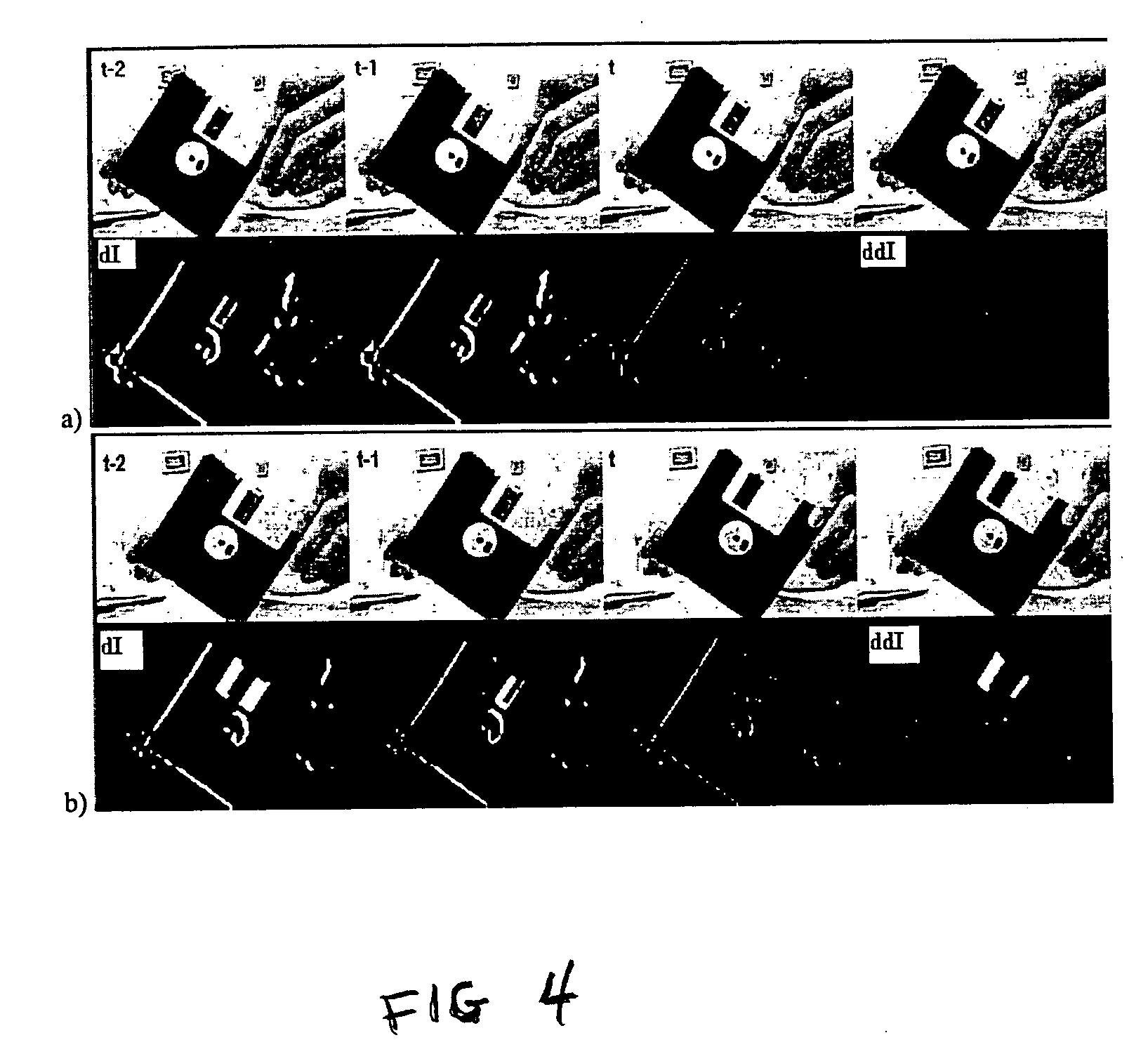Second order change detection in video
a detection and video technology, applied in the field of video image processing, can solve the problems of inaccessibility of all the above interfaces, physical manipulation of such interfaces, and unsatisfactory results, and achieve the effect of maximizing the number of pixels which match between interims
- Summary
- Abstract
- Description
- Claims
- Application Information
AI Technical Summary
Benefits of technology
Problems solved by technology
Method used
Image
Examples
Embodiment Construction
As is well-known, one problem with detecting a change in the open or closed state of eyes in successive video frames is finding which change in the image is caused by eye lid motion and which is caused by head motion.—Since the human head is moving, even minutely, between frames, there are frequently elements in the image which have changed because of head motion, such as around brows, lips, nostrils, as well as around the hair line and head boundary. Changes caused by eye lid motion will be easier to detect if those changes caused by head motion, which may be referred to as global changes, can be detected and removed from the consideration.
The above detection and removal from consideration of global changes can be done by using at least three successive video frames. Referring to FIG. 1, three successive video frames are illustrated with the subject of the frames closing his eyes in the first frame 10. As can be seen, between the third frame 30 and the second frame 20, the subje...
PUM
 Login to View More
Login to View More Abstract
Description
Claims
Application Information
 Login to View More
Login to View More - R&D
- Intellectual Property
- Life Sciences
- Materials
- Tech Scout
- Unparalleled Data Quality
- Higher Quality Content
- 60% Fewer Hallucinations
Browse by: Latest US Patents, China's latest patents, Technical Efficacy Thesaurus, Application Domain, Technology Topic, Popular Technical Reports.
© 2025 PatSnap. All rights reserved.Legal|Privacy policy|Modern Slavery Act Transparency Statement|Sitemap|About US| Contact US: help@patsnap.com



